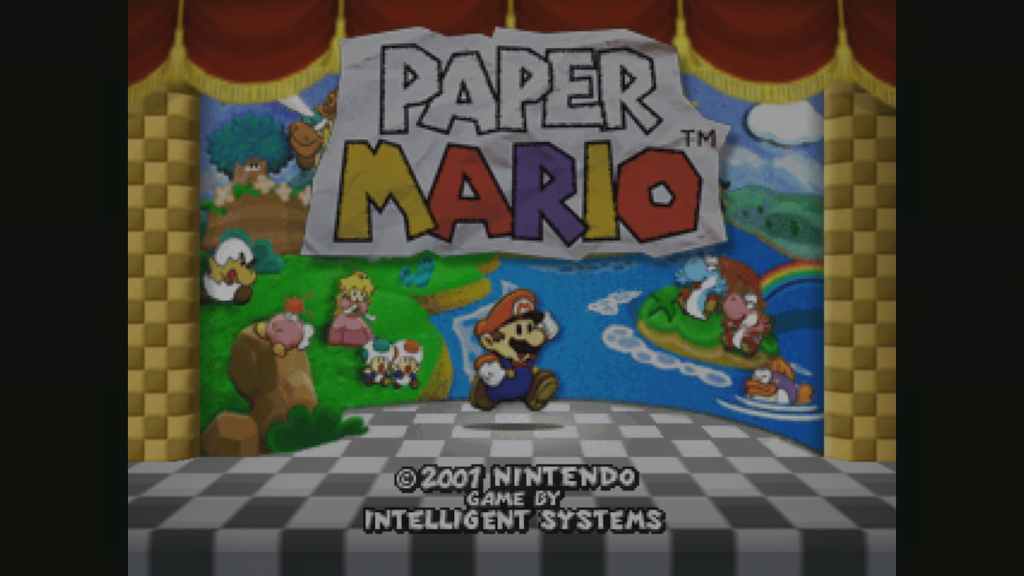For decades, Nintendo has proven its ability to reinvent its most beloved characters and series. Whether it’s Mario jumping from 2D to 3D or Zelda experimenting with open-world freedom, the company has consistently reimagined its icons while keeping their spirit intact. Unfortunately, this does not extend to all of its series and experiments. One series has been plagued with bad releases, and fans have wanted it to return to its Nintendo 64 and Nintendo GameCube roots. Nintendo has strayed from the heart of this beloved series, and I’m frustrated with the treatment it keeps receiving with each new game.
Videos by ComicBook.com
The series first captivated players with its witty writing, engaging role-playing mechanics, and stylized humor. But as the years go on, the series simplifies each of these aspects until it is hardly recognizable. Nintendo needs to look to the past, specifically Paper Mario and Paper Mario: The Thousand-Year Door, when developing the series’ next entry on the Nintendo Switch 2.
Nintendo Needs to Return Paper Mario to Its Roots

Paper Mario first debuted on the Nintendo 64, where it stood out as a playful twist on both Mario and turn-based RPGs. Fans loved its clever concept of flattening the Mushroom Kingdom and characters into paper and then using this aesthetic in gameplay as well. But what made it truly special was the writing and depth. Mario had more personality than ever, the dialogue had humor and heart, and the companions felt alive and more than just extensions of gameplay mechanics.
This formula was refined and elevated in Paper Mario: The Thousand-Year Door. It expanded the world, enhanced character development, and introduced more layered puzzles. The combat system rewards strategy and skill thanks to its various options and precise input commands. It also featured one of the most fun and challenging post-games that Nintendo has ever released, further extending the joy the title brought.
But since these two releases, each game in the series has stepped away from its core identity. Super Paper Mario slightly deviated from the main gameplay, but Paper Mario: Sticker Star destroyed it. It removed companions, one of the core aspects that I and fans loved, and simplified the RPG mechanics to the point where there was no point in battling. Removing experience was one of the most baffling decisions, and the series has yet to reintroduce this main RPG mechanic.
The world’s still visually beautiful, and Nintendo has expanded on the paper aesthetic, but at the cost of the game’s being fun and dumbing down the characters within it. I haven’t bothered with a Paper Mario game since The Thousand-Year Door, which is one of my favorite RPGs of all time. While the humor, writing, and world still interest me, I can’t sit through the unrewarding combat. Paper Mario: The Origami King made an attempt to move in the right direction, but it still focused on adding gimmicks rather than what made the series what it was.
Switch 2 Is Nintendo’s Chance to Revive Paper Mario’s True Spirit

Almost every Nintendo console has received a Paper Mario game, so the Nintendo Switch 2 is likely to get one. Paper Mario: The Thousand-Year Door remake proved what I knew all along: fans want to see the series’ identity revived. With it being the most recently released, even as a remake, it gives me hope that Nintendo will listen to fans and keep it in mind when creating Mario’s next flat adventure.
The original Paper Mario formula isn’t just nostalgia bait. It is validation that there is a hungry audience for the series’ first vision. Nintendo cannot water down the experience again, especially considering the possibilities on the Nintendo Switch 2. Paper Mario has always featured input-based combat, and the new hardware of the Switch 2 opens the door for new mechanics. This does not mean it needs to use these features for some poorly implemented gimmick, but focus on the main pillars of Paper Mario and The Thousand-Year Door.
I want a cast of fully fleshed-out companions to discover while exploring a charming, interconnected paper world. Turn-based combat needs to feel exciting and rewarding, not just a system tacked on to make the game a JRPG. The story, puzzles, and NPCs need depth and diversity that give a sense of discovery and wonder. All of this needs to be balanced with the humor and heart that made the first two games iconic.
Why the Franchise Must Look Back to Move Forward

Nintendo’s long-term series have thrived with revolutionary experiments while still respecting its original DNA. Paper Mario has been around since the Nintendo 64, but the series has forgotten what made it special. While I don’t want Paper Mario to stagnate, it needs to evolve in a way that honors what made it special in the first place. Nintendo must look back when moving forward with Paper Mario on the Nintendo Switch 2.
The Switch 2 could be the platform for the series’ revival. Nintendo could craft an RPG that feels like a classic and modern at the same time. Balancing fan-favorite mechanics with new features, creating a narrative humor that can go into darker storylines when needed, and creating a world that pushes the boundaries of Paper Mario without breaking into something unknown. Honestly, Nintendo needs to just ignore Paper Mario: Sticker Star, Paper Mario: Color Splash, and Paper Mario: The Origami King altogether.
Instead, it should look to Paper Mario and The Thousand-Year Door like indie title Bug Fables did. Even Mario & Luigi: Brothership failed to capture the feeling that the Paper Mario series gives me, and it hit similar notes that show Nintendo favored it over Paper Mario. Nintendo keeps trying new things when it has already perfected the Paper Mario formula in the past. The Thousand-Year Door remake proved how successful this formula is, so I can’t understand why Nintendo refuses to accept this.
What do you think? Leave a comment below and join the conversation now in the ComicBook Forum!









